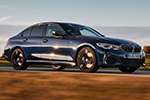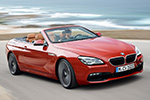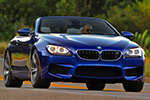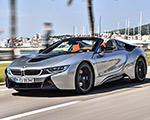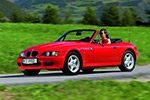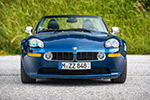BMW has cleared an important hurdle on the way to its next generation of assisted driving. The company is now the first carmaker in Germany to receive international approval under UN Regulation No. 171 (DCAS – Driver Control Assistance Systems), and the first model to benefit is the new BMW iX3, the opening act of the Neue Klasse lineup. On paper, that sounds like another regulatory box ticked. In practice, it unlocks a new level of Hands-Off Level 2 assistance on motorways and a much more natural relationship between driver and technology – what BMW is now calling BMW Symbiotic Drive.
During a test session in Spain with the new iX3, we went through the system in detail with one of BMW’s lead engineers. The result is a clearer picture of how this tech actually works in the real world, beyond the marketing slogans and legal acronyms.
A New Baseline: DCAS and Why It Matters
DCAS is an international regulation that defines how advanced driver-assistance systems must behave, especially when they allow the driver to take their hands off the steering wheel for extended periods. It sets rules for driver monitoring, system limits, redundancy, and how predictable the system’s behavior must be. BMW’s approval under UN R171 means its new Motorway/Highway Assistant has also been checked against a strict global standard and cleared for broader rollout in multiple markets that recognize UN-ECE regulations.
BMW engineers describe the intent behind it very simply: the driver must remain involved, the system must stay controllable at all times, and its behavior must be reproducible – no surprises, no black box behavior. The first production car built around that rulebook is the new BMW iX3.
Hands-off up to 130 km/h – But with Serious Redundancy
With the new Motorway (or Highway) Assistant activated, the iX3 allows hands-off driving up to 130 km/h on suitable motorways. The driver still has to pay attention and remain ready to intervene, but the system takes over the continuous steering and speed control.
Under the skin, there is more going on than just a steering-wheel touch sensor and a single front camera. The engineer walked us through the stack: a heated, forward-facing main camera behind the glass, four surround-view cameras that are now used for lane validation and environment monitoring (not just for parking), high-definition map data, and a high-precision GPS that knows exactly which road the car is on. If the environment is too complex – twisty rural roads, chaotic mixed traffic, high pedestrian risk – the system simply won’t activate.
The point is not to “force” automation everywhere, but to narrow it to situations where the system can safely maintain control and where DCAS allows hands-off operation.
The driver Camera Moves – And Sees More
One visible change in the iX3 cabin is the driver-monitoring camera. In earlier BMWs it sat behind the steering wheel, sometimes partially blocked depending on wheel position. In the iX3, it moves right below the rear-view mirror. From there it has a much wider field of view. It can see your eyes, head position, and even body posture. And the function is clear: if you are not looking at the road for too long, the hands-off function won’t engage or will disengage.
That camera, together with the sensor redundancy and the clearly defined system limits, is what makes the DCAS approval possible.
Motorway, Highway, City: Different Names, Same Idea
BMW is also cleaning up the naming structure, which will vary slightly depending on the market. In Germany the system launches as “Motorway and City Assistant”, in the UK it becomes “Motorway and City Assistant” as well but aligned to local terminology, while in markets like the US it is expected to be called “Highway and City Assistant.”
Under that umbrella, there are two main layers in the iX3:
- The base setup, standard on the car, already includes adaptive cruise control and basic lane-keeping in what BMW calls its “plus” package. That alone allows a more relaxed drive on long trips.
- On top of that sits the Highway & City Assistant option, priced around €1,400 in Germany at launch, which unlocks hands-off operation, active lane changes, and advanced city features such as traffic-light detection and automatic pull-away.
Crucially, every iX3 already comes with the full hardware suite – all cameras, sensors, and computing power are in the car from day one. If a customer decides to enable the Highway & City Assistant later, it can be activated digitally via the car’s online store.
Symbiotic Drive: What Is It?
Traditional assistance systems often behave like fragile modes: touch the brake or nudge the steering wheel and you’re back to doing everything yourself. BMW wants to move away from that. With BMW Symbiotic Drive, the iX3 allows the driver to make small steering or braking inputs without deactivating the assistance. That includes a new feature called symbiotic braking, backed by more than two dozen patents according to BMW.
If, for example, you decide the following distance is a bit too short, you can gently press the brake pedal to open up the gap. The system stays active and resumes control once you release the pedal. Only a firmer, deliberate push will switch everything off.
The same applies to the steering: minor corrections don’t shut the system down, they simply overlay your preference on top of the assistance. It feels less like flipping between two modes and more like sharing the task.
Three Ways to Change Lanes
Lane changes are another area where BMW lets you blend human intention with automated execution. Once the assistant is active and the conditions are met, you can trigger a lane change in three ways.
The classic method is to use the indicator stalk as usual. The car checks its surroundings, confirms the path, and carries out the maneuver.
The second method uses eye confirmation. When the system suggests a lane change – for example at a motorway interchange or exit – you simply look at the corresponding wing mirror. A glance is interpreted as your approval and the car executes the maneuver, staying in assistant mode across the interchange and down the exit ramp. 
The third method is a very subtle steering input. A tiny nudge, just a few millimeters on the wheel, combined with the mirror check, is enough to trigger the lane change. From inside the cabin the movement is almost invisible, but the system recognizes it as intent.
An audible chime confirms the maneuver, and if you use the function frequently you can reduce or disable the sound and rely on the visual cues in the Panoramic Display and Head-Up Display instead.
City Assistant and Traffic Lights: Stopping at Red, Moving at Green
The DCAS approval is primarily about motorway use, but BMW is also extending the assistance suite into urban environments under the City Assistant banner. At launch in Germany, the iX3 will be able to recognize traffic lights, stop automatically at red, and move off again when the light turns green – as long as the driver is watching the road. If you are looking down at your phone, the car will not simply launch on its own. Instead, it plays a subtle alert, waits for you to look ahead, and only then drives off.
It’s a small detail, but it shows how BMW is trying to balance automation with responsibility: the car does the boring part, but it doesn’t assume you’re allowed to disengage from the driving task. More complex urban features will roll out later via over-the-air updates.
Speed limits, Offsets, and Regulation Reality
One area where regulation is clearly visible is speed management. Under DCAS, BMW is not allowed to let the driver permanently store a higher-than-posted offset when using hands-off assistance. So the system splits the behavior. If you’re using the full Highway & City Assistant in hands-off mode, you can still temporarily increase speed above the detected limit using the plus/minus buttons on the steering wheel, but the car won’t remember that offset forever. Next time, it goes back to the limit.
If you switch the advanced assistant off, you can once again store permanent offsets like in previous BMWs. It’s a compromise between what drivers are used to and what the regulation allows.
One Tap Back to “Classic”
BMW knows not every driver is ready to be monitored by cameras or to let go of the steering wheel for long stretches. That’s why the iX3 has a quick way to revert to a more traditional setup. Inside the menu, there is a single toggle that shuts down the advanced DCAS-related functions and leaves you with a more “classic” driver-assistance package: adaptive cruise, basic lane keeping, no hands-off, no symbiotic braking, no traffic-light automation.
Rollout and What Comes Next
At launch, the new Highway/Motorway and City Assistant will be available in Germany, Austria, Italy, France, Belgium, the Netherlands, Luxembourg, Switzerland and Liechtenstein, with additional countries and functions to follow later.
















































